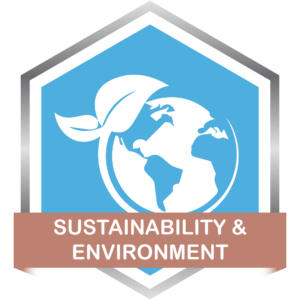About Course
Environmental Impact Assessment – EIA 
The Environmental Impact Assessment – EIA is an unique effort to provide awareness about environmental issues from the Construction , Sustainability , Infrastructure development and construction environment Management perspective. It is expected that after going through the course, learners will have a comprehensive idea about the issue areas.
Environmental science and sustainability courses address the challenge of balancing short-term human needs with the long-term health of environmental systems. Topics include conservation, environmental policy, agriculture, sustainability, pollution, and climate change.
Environmental Impact Assessment (EIA) is a way to figure out how a proposed project or development is likely to affect the environment, taking into account both positive and negative effects on the economy, culture, and health of people.
EIA is basically a tool used to figure out how a project will affect the environment, the economy, and society. This is used to predict the effects a project will have on the environment during the planning stage so that steps can be taken to lessen the bad effects. In this class, students will learn the basics about the history, need, structure, process, methods, and problems involved. Students will also learn how to choose an impact assessment method, an overview of methods, rules for public participation, and how to write reports.
Krishnaji Pawar, who is an expert on sustainability, put together the Environmental Impact Assessment (EIA) Training Course.
specialises in developing sustainable design strategies for Green Building Certification Systems (LEED, GSAS, etc.), Energy Management, Energy Efficiency, Energy Audits, Building Commissioning, Environmental Impact Assessments, and Environmental Management Systems.
What is an environmental impact assessment (EIA)?
- Environmental Impact Assessment (EIA) is a decision-support tool for those deciding whether or not to approve a development project.
- The purpose of an EIA is to determine the potential environmental, social, and health effects of a proposed development so that those who make decisions about the project’s development and approval are aware of the likely consequences of their decisions before making them and are thus more accountable.
- Its goal is to make decision-making more informed and transparent while also attempting to avoid, eliminate, or mitigate potential negative consequences by considering alternative ideas, sites, or methods.
- UNEP defines environmental impact assessment (EIA) as a tool to determine the environmental, social, and economic implications of a project prior to making a decision.
An environmental impact assessment (EIA) is an assessment of the effects of planned operations on the environment, including the effects on biodiversity, flora and ecosystems, water, and air. EIA plays a significant role in the field of environmental science and management as a systematic approach. It makes measuring environmental damage easier for professionals, the government, and businesses. Environmental managers and practitioners can foresee both positive and negative effects on the environment using EIA.
Learning Objectives:
- Introduction to Environmental Impact Assessment: EIA, Scope, and Objectives
- Requirements for the EIA
- Legal Framework Standards; International Conventions and Protocols; Specific Environmental Guidelines and Standards
- Project Description and Environmental Baseline
- Environmental Impacts, Mitigation Measures, and Risk Management
- Environmental Management Framework: Roles and Responsibilities
- Statements of Commitments
 This two-hour course is designed to build upon a fundamental understanding of EIA procedures in order to provide learners with an in-depth understanding of those procedures. This will enable learners to effectively lead and advise colleagues on the EIA process for their decision-making authority. The course was initially developed for a select group of experienced planning environmental officers working in Middle Eastern countries (the United Arab Emirates, Qatar, the Kingdom of Saudi Arabia, Oman, and Bahrain).
This two-hour course is designed to build upon a fundamental understanding of EIA procedures in order to provide learners with an in-depth understanding of those procedures. This will enable learners to effectively lead and advise colleagues on the EIA process for their decision-making authority. The course was initially developed for a select group of experienced planning environmental officers working in Middle Eastern countries (the United Arab Emirates, Qatar, the Kingdom of Saudi Arabia, Oman, and Bahrain).
Because the trainers at Beyond Smart Cities have previous experience working in EIA, the course materials are easily adaptable to the specifics of any GCC setting. Learners will be able to better evaluate significance within the EIA process, drive more proportionate assessment, and deliver mitigation that can be turned into conditions more efficiently if the course places a greater emphasis on practical activity and discussions.
Course Content
Section 1: Introduction and Course Outline
-
13:50
-
L1. Introduction and Course Outline Handout
Section 2: Legal Framework and Standards
Section 3: Project Description
Section 4: Environmental Baseline
Section 5: Environmental Impacts,Mitigation Measures and RA
Section 6: Environmental Management Framework
Section 7: Statement of Commitments
Section 8: Summary and Resources
Student Ratings & Reviews


